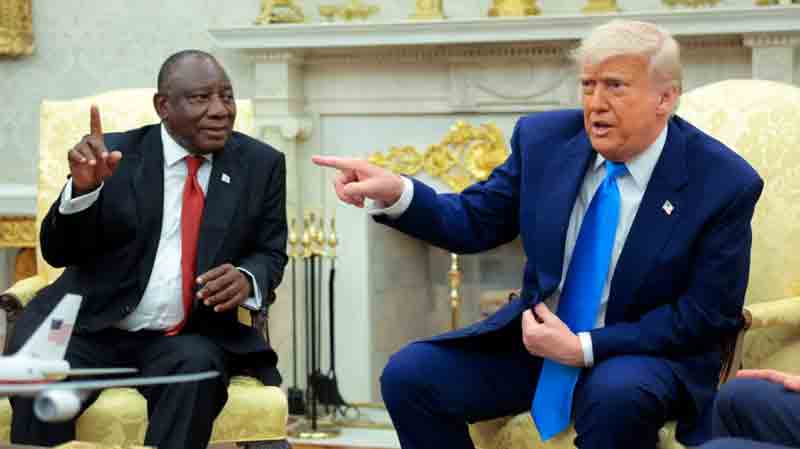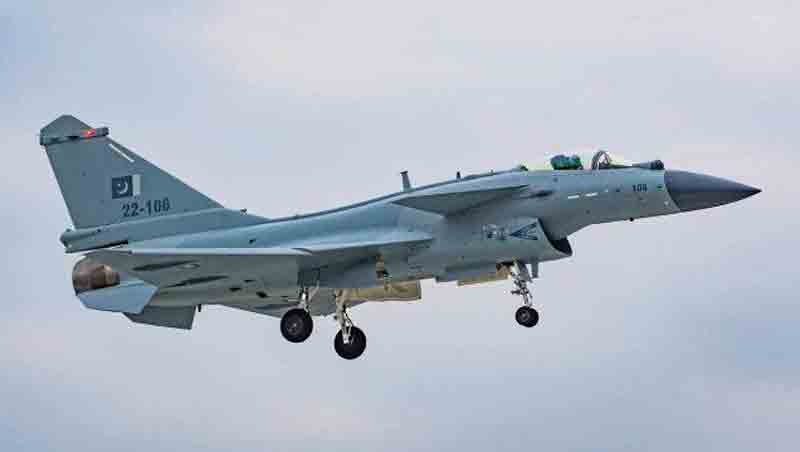Just before President Donald Trump welcomed his South African counterpart into the Oval Office on Wednesday, White House staff were seen transporting two large televisions down the driveway and into the West Wing. President Cyril Ramaphosa was unprepared for what was about to unfold.
Trump dimmed the lights and initiated what could be described as an ambush, presenting a video he claimed demonstrated his unfounded assertion that White South Africans are facing persecution and ‘genocide.’ A visibly taken aback Ramaphosa, who had just been engaging in light conversation with Trump about golf, remained silent. As a seasoned diplomat and former chief negotiator for Nelson Mandela during the transition away from White minority rule, Ramaphosa struggled to mask his unease.
The encounter was clearly premeditated, with Trump’s team providing printed articles for him to display to the cameras, which he claimed supported his allegations of White ‘genocide.’ It seemed almost certain that Trump would seize the opportunity to promote these fringe theories — which he has been vocal about for months — regarding the supposed seizure of land and mass killings of White farmers in South Africa. Just the previous week, 59 White South Africans had arrived in the United States after being granted refugee status by the White House.
Since assuming office in January, Trump has not shied away from transforming his meetings into platforms for public confrontation. However, the multimedia spectacle he orchestrated surpassed anything he has previously executed in the Oval Office. Even his heated exchange with Ukrainian President Volodymyr Zelensky in February, which some critics viewed as a premeditated setup, lacked visual support.
A White House official indicated that Trump intended Wednesday’s event to highlight an issue that the administration believes the media has overlooked. Trump claimed to have received feedback from ‘thousands’ regarding the matter.
Despite Ramaphosa’s composed efforts to clarify his country’s circumstances and address Trump’s accusations, Trump seemed unfazed. ‘Death, death, death, horrible death,’ he exclaimed, while flipping through printed articles. It was clear during the unfolding events that Trump and his team had meticulously prepared in advance to substantiate the unfounded claims of White victimization.
On May 21, Trump hosted South African President Cyril Ramaphosa at the White House, where Trump caught the leader off guard with alleged video evidence to support claims of “white genocide.” #Trump #SouthAfrica #Ramaphosa #OvalOffice #WhiteHouse pic.twitter.com/fBV7O6VhOE
— Brut America (@brutamerica) May 21, 2025
Aides noted that they expected this topic to dominate the Oval Office discussion and were aware of Ramaphosa’s intention to correct Trump’s erroneous beliefs before his trip to Washington. This prompted the White House to arrive at the meeting equipped with materials and to showcase a video featuring the fiery opposition leader Julius Malema calling for violence against White farmers. Shortly after the video concluded, the White House shared a copy on its official social media platforms. The articles Trump brandished during the meeting were systematically disseminated online by his aides.
Trump’s supporters praised the confrontation on social media, interpreting it as another instance of the president demanding accountability from global leaders. The strategic release of information indicated Trump’s eagerness to leverage the meeting to promote their narrative of victimization, despite Ramaphosa’s intention to focus on trade and geopolitical matters. No amount of diplomacy or gestures from the South African president—such as inviting two professional golfers to his delegation or praising Trump for the decor of the Oval Office—could prevent the unexpected turn of events.
‘What you witnessed in the speeches does not reflect government policy. We have a multiparty democracy in South Africa that permits diverse opinions,’ Ramaphosa stated following the video. ‘Our government policy is entirely opposed to what he was asserting.’
Trump’s preoccupation with the supposed mistreatment of White South Africans is not a recent development; he expressed a desire to assist White farmers displaced from their properties during his first term. However, his public assertions of oppression and ‘genocide’ have intensified significantly in the early months of his second term. The White House has expedited the processing of Afrikaner refugees while halting refugee applications from other groups.
Earlier this year, the US also suspended aid to South Africa and expelled its ambassador. In many respects, Trump’s critique of South Africa’s laws—designed to address the injustices of apartheid—aligns with his campaign against diversity initiatives in the United States, which, like some of the South African regulations he opposes, aim to rectify historical racial inequalities. His stance has received backing from South African-born billionaire Elon Musk, who was one of Trump’s key advisors during the initial phase of his new administration.
Musk has mostly distanced himself from his efforts to reform the federal government in order to concentrate on his business pursuits. However, he made a return to the White House on Wednesday for a meeting with Ramaphosa, positioning himself behind one of the gold sofas as the contentious discussions took place. Musk had previously accused South Africa of hindering the operation of his Starlink internet service due to non-compliance with Black ownership regulations.
In anticipation of Wednesday’s meeting, South African government officials were preparing to propose a workaround that would enable Musk’s venture to function within the country. This move was perceived as an effort to foster goodwill with the US administration prior to the discussions. Nevertheless, it appeared to have little effect on easing tensions.
During the Oval Office proceedings, Trump seemed disinterested in allowing Musk to speak, stating, ‘Elon’s from South Africa, and I don’t want to talk to him about that. I don’t think it’s fair to him.’
Discover more from Defence Talks | Defense News Hub, Military Updates, Security Insights
Subscribe to get the latest posts sent to your email.





